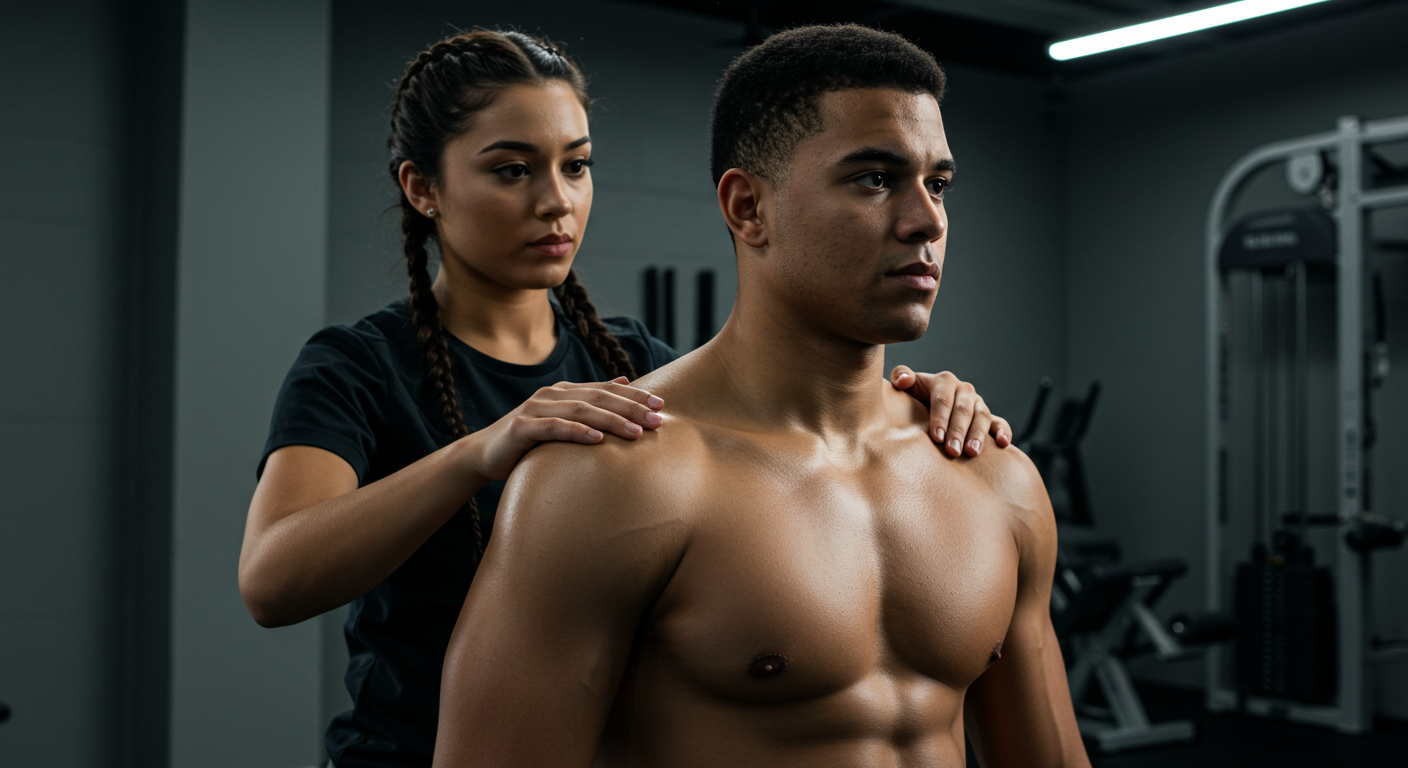At Renovera Medical Wellness & Aesthetic Spa, we help athletes reach their peak performance while recovering safely and effectively.
Sports massage is a cornerstone of our massage therapy services in Harlingen, TX, offering targeted benefits that go beyond relaxation.
In today’s blog, we’ll cover the science of sports massage, its benefits, techniques, and how it can be integrated into your athletic routine for optimal results.
What is a Sports Massage?
Sports massage is a specialized form of therapeutic massage tailored to meet the needs of athletes. It focuses on improving athletic performance, aiding recovery, and preventing injuries.
Unlike general relaxation massage, sports massage is dynamic and adaptable, incorporating techniques such as:
Effleurage: Long, sweeping strokes to warm up muscles.
Petrissage: Kneading techniques to release tension.
Deep Tissue Manipulation: Targeting deeper layers of muscle tissue for realignment and relief.
The Science Behind Sports Massages
Improved Circulation and Lymphatic Drainage
Sports massage enhances blood flow to muscles, delivering oxygen and nutrients critical for repair and performance.
A 2015 study published in the Journal of Athletic Training found that massage therapy increased blood flow and improved vascular function, supporting recovery after intense physical activity.
Reduced Muscle Soreness
Delayed Onset Muscle Soreness (DOMS) can hinder training schedules.
A meta-analysis in British Journal of Sports Medicine concluded that sports massages significantly reduces DOMS, enabling athletes to resume training sooner.
Enhanced Flexibility and Range of Motion
Tight muscles limit performance and increase injury risk. Massage breaks down adhesions (scar tissue) and promotes joint mobility, enhancing overall flexibility.
Benefits of Sports Massage for Athletes
1. Injury Prevention
Massage prepares muscles for activity by increasing elasticity and reducing stiffness. Pre-event sports massage helps minimize the risk of strains, sprains, and overuse injuries.
2. Faster Recovery
After rigorous training, sports massage speeds up recovery by flushing metabolic waste like lactic acid from muscle tissue, reducing inflammation, and easing muscle tightness.
3. Mental Relaxation and Focus
Athletic performance isn’t just physical—it’s mental. Massage reduces cortisol levels and boosts serotonin, promoting relaxation and focus.
Athletes often report feeling more mentally prepared for competition after a session.
4. Improved Athletic Performance
By enhancing circulation and muscle condition, sports massage primes your body for optimal performance.
Improved flexibility and reduced tension allow you to train harder and more efficiently.
Techniques Tailored to Your Sport
Pre-Event Sports Massage
A brisk, invigorating massage designed to warm up muscles, enhance circulation, and reduce tension. It prepares the body for peak performance without causing fatigue.
Post-Event Sports Massage
Focused on recovery, this massage calms the nervous system, reduces muscle soreness, and supports healing. Techniques are slower and more restorative.
Maintenance Massage
Regularly scheduled sessions address chronic tension, imbalances, and scar tissue. This ensures your body remains in optimal condition for consistent performance.
Integrating Sports Massage Into Your Routine
When Should You Get a Sports Massage?
Pre-competition: 1-2 days before an event to prepare muscles.
Post-competition: Within 24-48 hours to facilitate recovery.
Regular maintenance: Every 1-3 weeks, depending on training intensity.
Combine with Stretching and Hydration
Sports massage works best alongside a comprehensive recovery plan. Stretching, foam rolling, and proper hydration amplify its benefits, ensuring your muscles stay pliable and healthy.
Work with Trained Professionals
At Renovera Medical Wellness & Aesthetic Spa, our licensed therapists specialize in sports massage techniques tailored to your specific sport and needs.
Sports Massage Myths Debunked
Myth 1: It’s Only for Professionals
While elite athletes frequently use sports massage, recreational athletes and fitness enthusiasts benefit just as much. It’s about optimizing your unique physical condition.
Myth 2: It’s Painful
While deep tissue work may be intense, a good sports massage should not cause unbearable pain.
Communicating with your therapist ensures the pressure is adjusted to your comfort level.
Myth 3: It Replaces Warm-Ups or Cool-Downs
Sports massage is a complement, not a substitute, for proper warm-ups and cool-downs. Stretching and dynamic movements are still essential.
The Role of Sports Massage in Injury Recovery
1. Rehabilitation Support
For athletes recovering from injury, massage therapy supports healing by improving circulation to damaged tissues, reducing inflammation, and alleviating pain.
2. Scar Tissue Reduction
Injuries often result in scar tissue formation, which can limit mobility and cause discomfort. Massage breaks down adhesions, restoring normal muscle function.
3. Restoring Balance
Injuries can create compensatory imbalances, where uninjured muscles overcompensate. Massage restores balance, reducing the risk of future injuries.
What to Expect During a Sports Massage Session
Initial Assessment
Your therapist will discuss your athletic goals, training regimen, and any areas of concern.
Customized Approach
Each session is tailored to your needs—whether it’s targeting sore muscles, improving mobility, or enhancing relaxation.
Techniques and Tools
In addition to manual techniques, your therapist may use tools like massage rollers, stretching aids, or even percussive devices for deeper relief.
FAQs
How is sports massage different from regular massage?
Sports massage is more targeted and dynamic, focusing on athletic performance and recovery. It incorporates techniques specific to muscle function, flexibility, and injury prevention.
Can sports massage improve my performance?
Yes! By enhancing circulation, reducing tension, and improving flexibility, sports massage prepares your body for optimal performance.
Is it safe to get a massage during training?
Absolutely. Regular sessions support recovery, prevent overuse injuries, and maintain muscle health throughout your training cycle.
How long is a typical session?
Sessions usually last 60-90 minutes, but shorter pre- or post-event massages may range from 15-30 minutes.
Are there any side effects?
Some clients may experience mild soreness, especially after deep tissue work. Staying hydrated and stretching post-massage can minimize discomfort.
Why Choose Renovera for Sports Massage?
At Renovera Medical Wellness & Aesthetic Spa, our therapists are trained to address the unique needs of athletes, ensuring each session leaves you feeling rejuvenated and ready for your next challenge.
Start Your Journey to Peak Performance
Ready to experience the benefits firsthand?
Book your sports massage session at Renovera Medical Wellness & Aesthetic Spa today and take the next step in your athletic journey.

